The Map of the Art
Edited by Katharine Harmon, “The Map as Art” brings together 360 visions of experimental cartography. It is wonderfully inspiring.

The following excerpt comes from Katharine Harmon’s introductory essay to The Map as Art.
There has always been art in cartography. Maps by definition are utilitarian, of course; they bear implicit promises of routes into and out of the unknown. Yet the language of maps as developed over time is a beautiful one, filled with artistic potential. Cartographers have long known that deploying artistic skills and techniques can enhance a map’s effect, and have to varying degrees used visual creativity to make their maps more compelling. Now the relationship between maps and art has swung around; artists are using maps to further their artistic purposes. In postmodern times, with all truths suspect, artists have found in cartography a rich vein of concepts and imagery to mine. Cartographic rules give artists whole networks of assumptions to exploit and upend. In the last 50 years artists have produced much inspiring material for those who appreciate what art can tell us about maps, and how maps enhance art.
All images courtesy Princeton Architectural Press, all rights reserved.
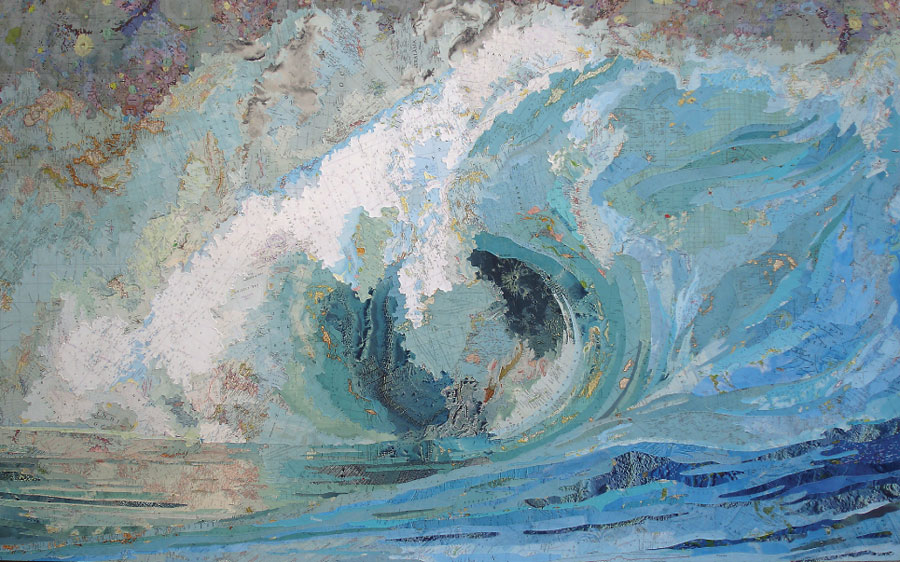
“Cusick creates outsized collaged paintings from fragments of atlases and school geography books published between 1872 and 1945, a time of much mapping and remapping.”
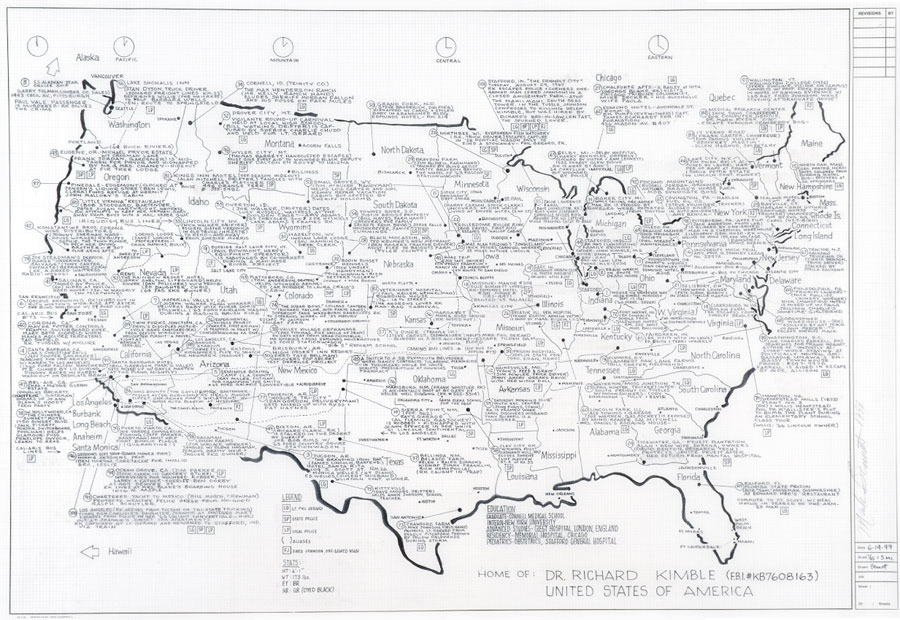
“Bennett creates blueprint architectural renderings of the homes of classic sitcom and film characters. Occasionally, he widens his scope to produce maps of entire television shows and, in the case of The Fugitive, the entire country, so as to track the nail-biting peregrinations of Dr. Richard Kimble, endlessly searching for the one-armed man.”
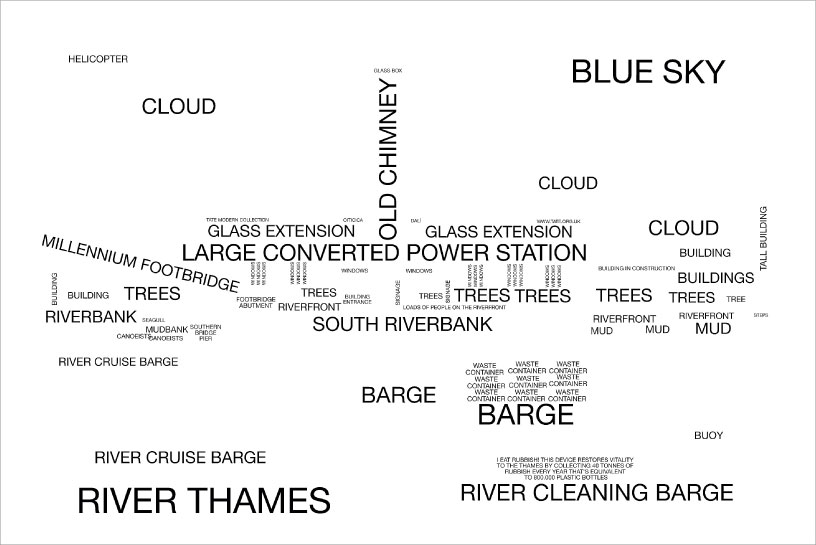
“Duman devised a series of seven typographic prints depicting landmarks of London, his adopted home. Duman took photographs of the sites and placed words on each image in order to completely replace the visual components with labels.”
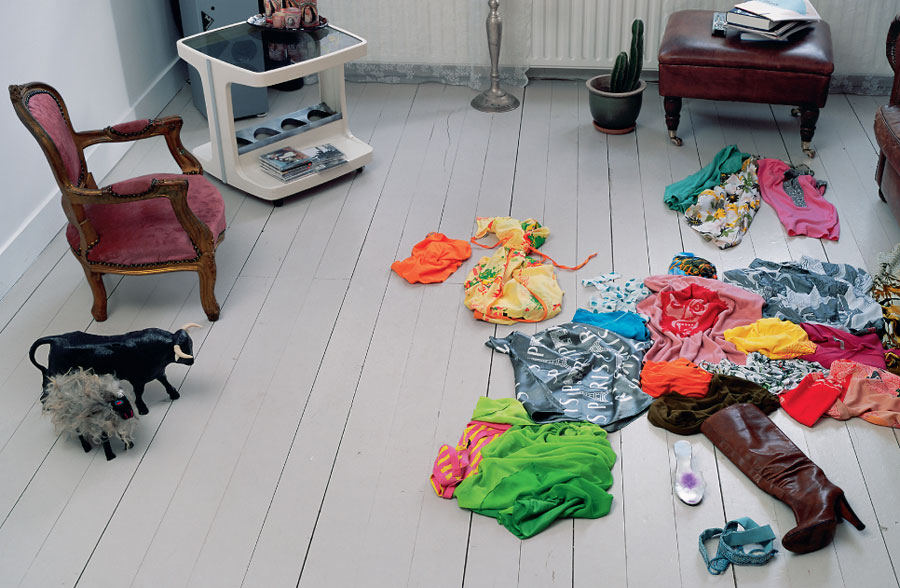
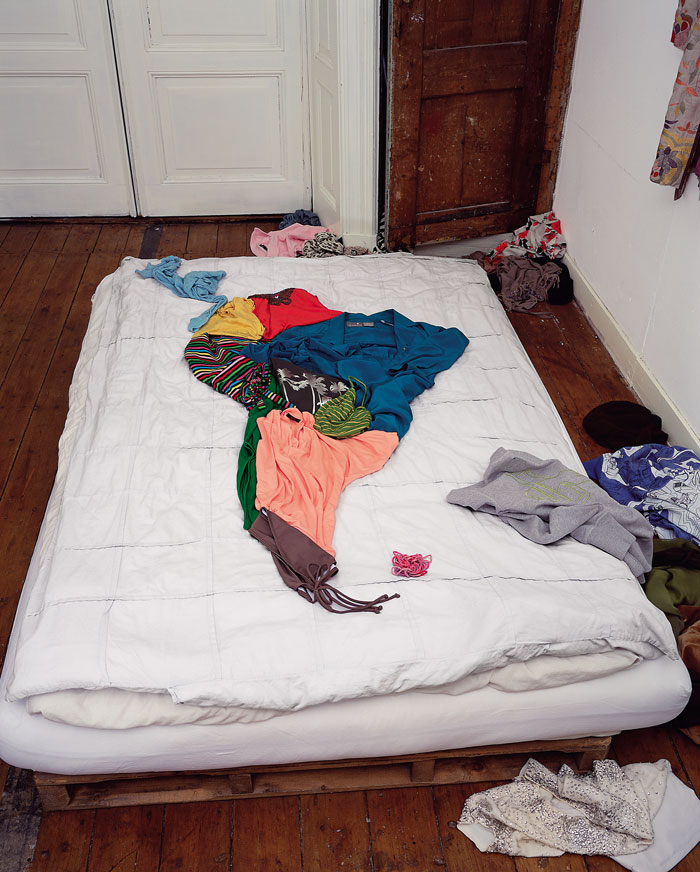
“Schoenaerts, a conceptual photographer living in Amsterdam, was commissioned by the Dutch magazine Rails to create images for a thematic issue focusing on countries and borders.”
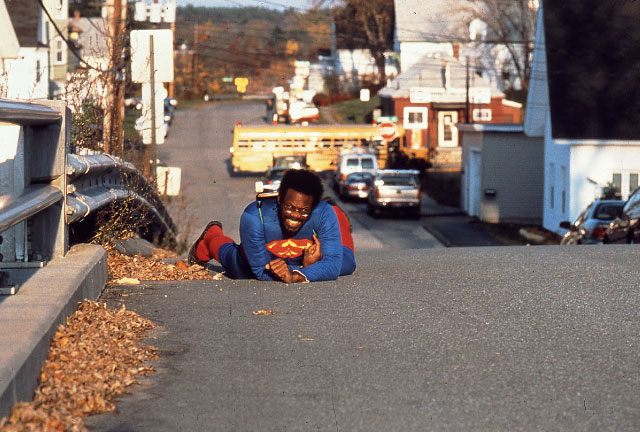
“Combining self-flagellation and self-affirmation, Pope.L has executed dozens of ‘crawls’ in various locations, the most ambitious being ‘The Great White Way.’ He performed segments of this crawl over five years, moving north from the Statue of Liberty through the length of Manhattan and into the Bronx.”
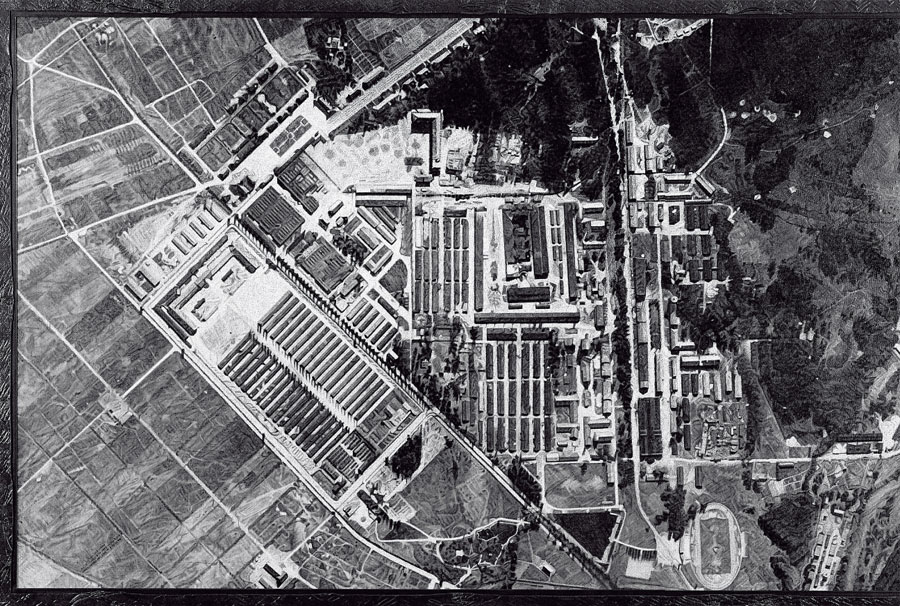
“The title alludes to the fourteen stations of the cross, as well as to the siting of Nazi concentration camps next to rail lines. The drawings, based on Luftwaffe and Allied aerial reconnaissance film, were made over the course of a decade, during which Galles says he felt ‘strapped to the belly of a bomber, looking down.’”
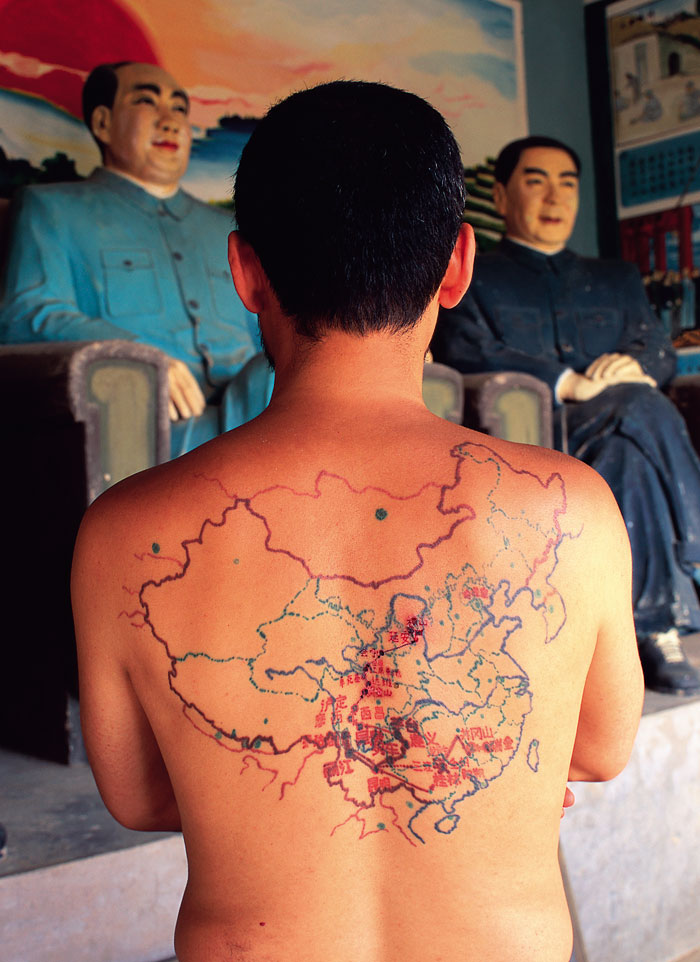
“In 2002, participants in the Long March Project began a ‘Walking Visual Display’ along the route of China’s historic, six-thousand-mile Long March (1934-6). As the team undertook the arduous journey, Beijing-based artist Qin kept in close contact with them and tracked the group’s route, with needle and ink, on a tattooed map on his back. Three years later, Qin continued the trek where the original marchers had left off. He was accompanied by three cameramen, who recorded their movements over unremittingly demanding terrain—from snow-covered Himalayan peaks to swamp grasslands—and a tattoo artist, who continually updated the groups progress on Qin’s back.”
Excerpt continued
Since the 1960s there has been an exponential increase in artists working with maps, and that abundant output has in turn inspired this book. Like the growth of a small settlement into a metropolis, cartographic motifs have spread across the artistic landscape. An ongoing succession of recent gallery and museum exhibitions and several cartographic blogs led me to map-enthused artists in North and South America, Europe, Africa, Asia, Australia, and New Zealand. Some of these artists have explored mapping in one phase of their careers; for others maps are a unifying motif throughout their work.
Is there any motif so malleable, so ripe for appropriation, as maps? They can act as shorthand for ready metaphors: seeking location and experiencing dislocation, bringing order to chaos, exploring ratios of scale, charting new terrains. Maps act as backdrops for statements about politically imposed boundaries, territoriality, and other notions of power and projection.
Mapping and art movements are equally susceptible to shifting political and aesthetic winds. Like artworks, maps are selective about what they represent, and call out differences between collective knowledge and individual experience. Artists use maps to respond to social and economic globalization, and to find orientation amid cultural volatility. And some artists include maps in their artworks not for their semiotics but because they can adapt cartographic systems to their uses or because they simply are drawn to the line and shape of the map’s vocabulary.
